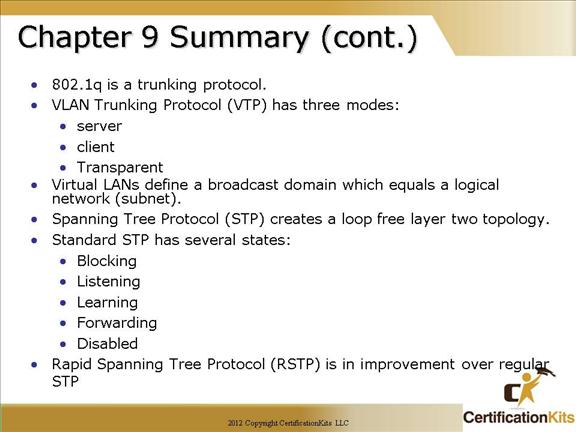Cisco CCNA Rapid Spanning-Tree (RSTP)
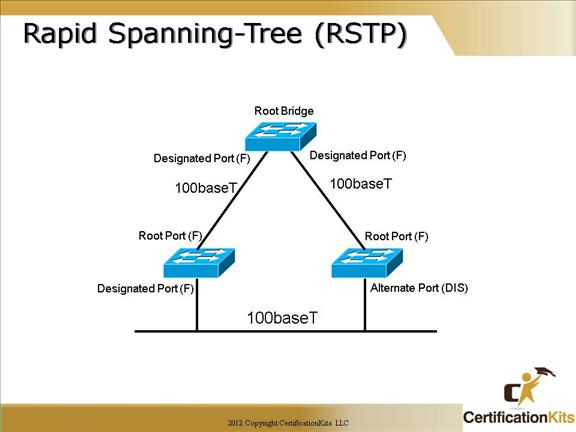
RSTP is specified in IEEE 802.1w where as regular STP is defined in IEEE 802.1D.
RSTP significantly reduces convergence time when changes occur to the physical topology. RSTP accomplishes this by defining additional port roles of alternate and backup as well as defining port states as discarding, learning and forwarding (note, there is no longer a listening state).
As with STP, SRTP selects one switch as the root of the spanning-tree topology.
Cisco CCNA STP Question
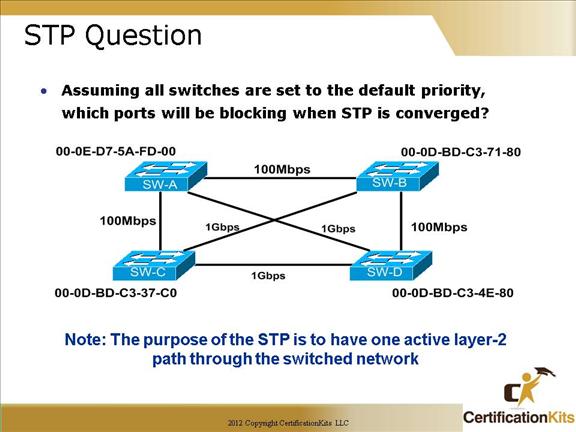
Since all bridges are set to the default priority, Switch C is the root based on having the lowest MAC, which means all ports are forwarding on that switch. Bandwidth is used to determine the best paths to the root switch.
These are the ports that will be blocking mode:
Switch A port that connect to Switch B
Switch A Port that connect to Switch C
Switch B port that connect to Switch D
Cisco CCNA Port Fast
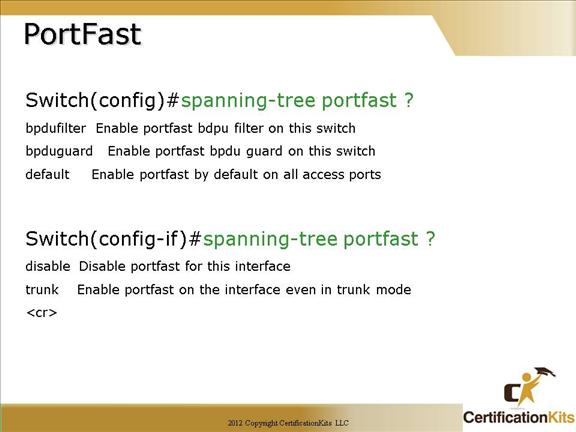
Example of configuring spanning tree portfast. NOTE: This should only be enabled on an access port (i.e. a port attached to a host, not another network device).
Switch(config-if)#spanning-tree portfast
%Warning: portfast should only be enabled on ports connected to a single
host. Connecting hubs, concentrators, switches, bridges, etc… to this
interface when portfast is enabled, can cause temporary bridging loops.
Use with CAUTION
%Portfast has been configured on FastEthernet0/1 but will only
have effect when the interface is in a non-trunking mode.
If the BPDUGUARD qualifier is specified then the port will be placed in err-disable mode if a spannign tree BPDU is receive on the respective port.
Cisco CCNA Port Fast Question
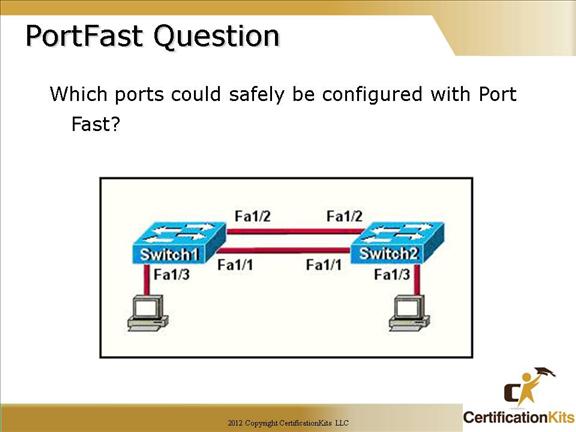
Fa1/3 on Switch 1 and Fa1/3 on Switch 2 since they are connected to an end host there is not possibility of receiving a spanning tree BPDU on the port.
Cisco CCNA STP Design Example
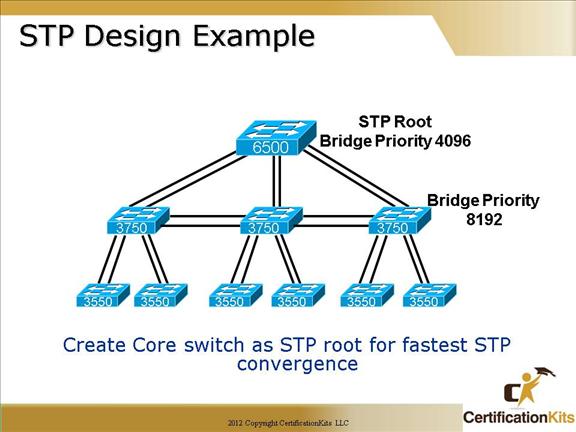
Set the bridge priority on the core switch to the lowest ID at 4096.
Set the distribution layer switches at 8192 or 16384, which would make the access layer switch 32768, which is the default.
The access layer switches would never be STP roots because they would have a higher priority based on the default value.
Specifying the priorities gives you control over what switch becomes the root rather than letting the MAC address decide.
Cisco CCNA Show spanning-tree
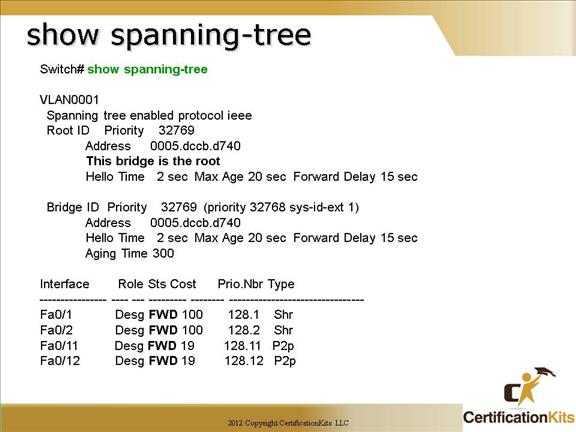
This example output is from the root bridge. Root bridges forward on all ports.
Cisco CCNA show spanning-tree
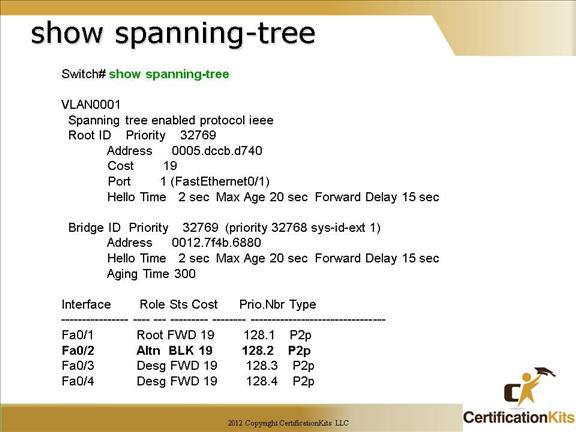
This example output if not from the root bridge. Non-root bridges will have blocked ports (if redundant links are present). Note: Fa0/2 is in blocking state.
Cisco CCNA Chapter 9 Summary
